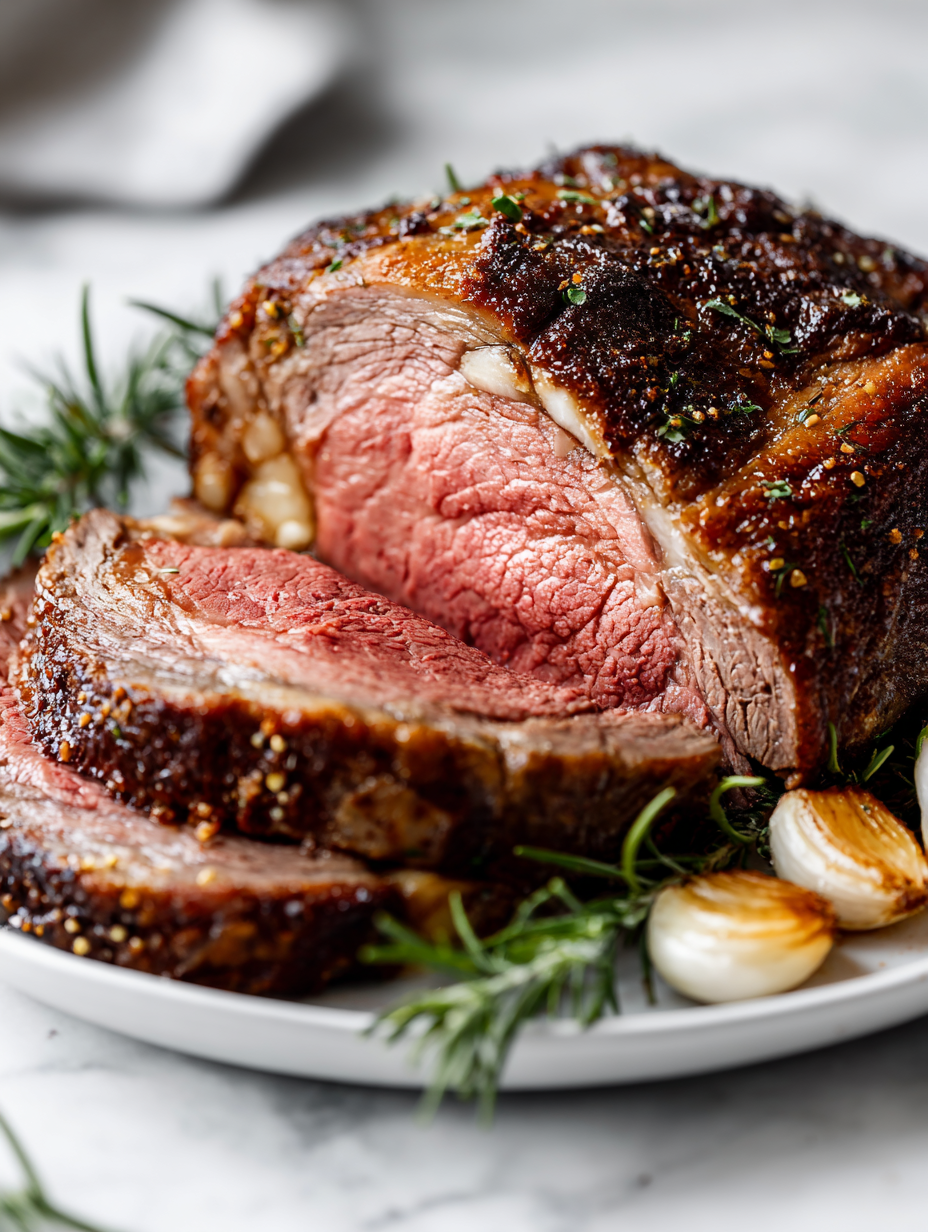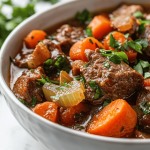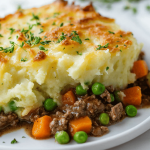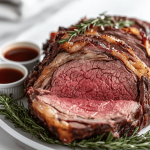Prime rib at Christmas carries a certain weight—literally and figuratively. It’s the centerpiece that gathers everyone around, promising a moment of shared warmth and indulgence. But beyond tradition, it’s the simple act of trusting the process that makes it memorable. This isn’t just about the meat, but about creating an experience in your own kitchen.
Why this prime rib keeps calling me back
The process of preparing a prime rib is a quiet act of patience and care. The smell of searing meat, the anticipation of a perfect crust, the tenderness revealed when carving—these moments make every holiday feel less hurried. It’s a tradition rooted in simple pleasures that never get old, especially when shared around a busy table.
Breaking down the ingredients for your prime rib
- Prime rib roast: The star—marbled, tender, with a rich beefy flavor that shines through.
- Salt and pepper: Simple but crucial—boosts the beef’s natural flavor, so don’t skimp.
- Garlic powder: Adds a savory punch; fresh garlic works, just use less.
- Olive oil or softened butter: Helps the rub stick and adds a glossy, flavorful crust.
- Herbs (rosemary, thyme): Optional but fragrant—fresh herbs can elevate the aroma.
- Horseradish or gravy: For serving—cuts through the richness with a sharp, spicy kick.
- Sea salt flakes: Finish with a sprinkle for crunch and extra flavor contrast.
Tools of the trade for a prime rib masterpiece
- Roasting pan with rack: Ensures even heat and allows fats to drain away.
- Instant-read thermometer: Checks internal temperature for perfect doneness.
- Sharp carving knife: Slices cleanly through the tender meat.
- Aluminum foil: Rest the meat, keeping it warm and juicy.
Step-by-step for a perfect prime rib roast
Step 1: Start by bringing your prime rib to room temperature, about 2 hours out of the fridge.
Step 2: Preheat your oven to 220°C (430°F).
Step 3: Rub the roast generously with salt, pepper, and garlic powder, pressing the seasonings into the meat.
Step 4: Place the roast on a rack in a roasting pan, fat side up.
Step 5: Roast for 20 minutes, then lower the heat to 160°C (320°F) and cook for about 15 minutes per pound, until a thermometer reads 52°C (125°F) for rare.
Step 6: Remove from oven, tent with foil, and let rest at least 20 minutes before carving.
Step 7: Slice against the grain, serve with a simple horseradish sauce or your favorite gravy.
Cooking checkpoints to ensure perfection
- Check the internal temperature with a reliable probe; it should be around 52°C (125°F) for rare.
- Look for a deep, golden crust that crackles lightly when pressed.
- Ensure the juices run clear and the meat feels firm but yields slightly when pressed.
Common mistakes and how to fix them
- Cooking without checking temperature.? Use a reliable meat thermometer to avoid overcooking.
- Cutting into the meat immediately after roasting.? Let the meat rest properly; it redistributes juices.
- Under-seasoning the meat.? Brush with a bit of oil or butter if the crust is too pale.
- Overtaring the roast.? Cover loosely with foil if the crust is burning too fast.

Classic Roasted Prime Rib
Equipment
- Roasting pan with rack
- Instant Read Thermometer
- Sharp carving knife
- Aluminum foil
Ingredients
- 4-5 pounds prime rib roast marbled, preferably bone-in
- 2 tablespoons sea salt flakes for finishing
- 1 tablespoon coarse black pepper freshly ground
- 1 teaspoon garlic powder
- 2 tablespoons olive oil or softened butter to help seasonings adhere
- 2 sprigs fresh rosemary optional, chopped
- 2 sprigs fresh thyme optional, chopped
Instructions
- Remove the prime rib from the fridge and let it sit at room temperature for about 2 hours to promote even cooking.
- Preheat your oven to 220°C (430°F) to start with a hot oven that creates a nice crust.
- Mix the olive oil or softened butter with the garlic powder, chopped rosemary, and thyme to create a fragrant herb paste.
- Rub the herb mixture generously all over the surface of the roast, pressing it into the meat to coat evenly.
- Place the roast on a rack in a roasting pan, fat side up, ensuring even heat circulation.
- Roast the meat in the preheated oven for 20 minutes to develop a flavorful crust.
- Lower the oven temperature to 160°C (320°F) and continue roasting for about 15 minutes per pound, or until a thermometer inserted into the center reads 52°C (125°F) for rare doneness.
- Once the target temperature is reached, remove the roast from the oven and tent loosely with aluminum foil to rest for at least 20 minutes, allowing juices to redistribute.
- Transfer the roast to a cutting board and use a sharp carving knife to slice against the grain, revealing tender, juicy interior with a crispy crust.
- Finish by sprinkling sea salt flakes over the sliced meat and serve immediately with your favorite sides and horseradish or gravy for added flavor.





